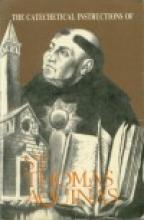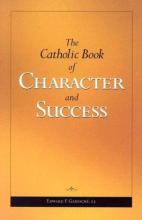No name
The Book of Saints and Heroes
The Borrowed House
The story is quite a touching family story as well as excellent historical fiction from World War II. The indoctrination and hatred pushed by Hitler and companies is very real and teenagers will benefit from being aware of how people can be misled by a strong leader. The book is clearly well-researched. Some of the details, rather than being the author's intepretation of that time period of history, appear to be based on actual testimonials collected by the author from family and friends who lived in Holland during World War II. Although the story is quite easy to read, the general subject matter and some of the details of the story make it appropriate for more mature students (probably just for high school).
This book was donated for review by Bethlehem Books.
The Bronze Bow
The Buck Stops Here
The Catechetical Instructions of Saint Thomas Aquinas
Saint Thomas provides beautiful explanations of the Apostles' Creed, the Ten Commandments, the Sacraments, the Lord's Prayer and the Hail Mary.
Sample passages:
"From all this then is seen the effect of the passion of Christ as a remedy for sin. But no less does it profit us as an example. St. Augustine says that the passion of christ can bring about a complete reformation of our lives. Whoever wishes to live perfectly need do nothing other than despise what Christ despised on the Cross, and desire what Christ desired. There is no virtue that did not have its example on the Cross."
"The plenitude of grace in Mary was such that its effects overflow upon all men. It is a great thing in a Saint when he has grace to bring about the salvation of many, but it is exceedingly wonderful when grace is of such abundance as to be sufficient for the salvation of all men in the world, and this is true of Christ and of the Blessed Virgin. Thus, 'a thousand bucklers,' that is, remedies against dangers, 'hang therefrom.' Likewise, in every work of virtue one can have her as one's helper. Of her it was spoken: ' In me is all grace of the way and of the truth, in me is all hope of life and of virtue.' Therefore, Mary is full of grace, exceeding the Angels in this fullness and very fittingly is she called 'Mary' which means 'in herself enlightened': 'The Lord will fill thy soul with brightness.' And she will illumine others throughout the world, for which reason she is compared to the sun and the moon."
Written in the 1200s, this English edition has a 1939 Imprimatur.
Update from the webmaster, March 2024: This book is available from a variety of sources because its text is in the public domain. The Click here for the full text of the Catechetical Instructions, at the Internet Archive.
The Catechism of the Catholic Church: Second Edition
This beautiful new Catechism is truly a gift and a treasure in an era when "new" so often means "bad." Although I have not yet read every word of it (it's quite a big book!) I have had the pleasure of leading Catechism study groups for mothers and found much success in using this text to help some who were previously very lukewarm in their faith to better understand not only what the Catholic Church really teaches, but why these teachings make sense - yes, even in our modern world!
The Catechism is divided into four main sections. The First, the Profession of Faith, covers the basic beliefs and dogmas of the Church - based upon the Creed. Part Two, "The Celebration of the Christian Mystery", discusses liturgy and the Sacraments. Part Three, "Life in Christ", covers moral life - particularly in light of the Beatitudes and the Ten Commandments. Part Four is on Christian Prayer.
The text is both difficult and joyful to read. It is difficult (in some places) because of the unfamiliar vocabulary - catechesis, pedagogy, asceticism, fecundity - these are not part of our every day vocabulary (although many should be learned by high schoolers). Even so, the new edition has an in-depth glossary in the back and these more unfamiliar words come up once every few paragraphs rather than every other sentence. It is joyful to read because it is so rich, so beautiful, so true. Throughout the text, the reader is referred to Sacred Scripture, Church documents and the writings of the Saints. An additional volume The Companion to the Catechism of the Catholic Church, published by Ignatius Press, provides the text from all of the footnotes for easy reference and further study.
A few sample passages:
(407) "The doctrine of original sin, closely connected with that of redemption by Christ, provides lucid discernment of man's situation and activity in the world. By our first parents' sin, the devil has acquired a certain domination over man, even though man remains free. Original sin entails 'captivity under the power of him who thenceforth had the power of death, that is, the devil.' Ignorance of the fact that man has a wounded nature inclined to evil gives rise to serious errors in the areas of education, politics, social action and morals."
(1395) "By the same charity that it enkindles in us, the Eucharist preserves us from future mortal sins. The more we share the life of Christ and progress in his friendship, the more difficult it is to break away from him by mortal sin. The Eucharist is not ordered to the forgiveness of mortal sins - that is proper to the sacrament of Reconciliation. The Eucharist is properly the sacrament of those who are in full communion with the Church."
(2521) "Purity requires modesty, an integral part of temperance. Modesty protects the intimate center of the person. It means refusing to unveil what should remain hidden. It is ordered to chastity to whose sensitivity it bears witness. It guides how one looks at others and behaves toward them in conformity with the dignity of persons and their solidarity."
(2712) "Contemplative prayer is the prayer of the child of God, of the forgiven sinner who agrees to welcome the love by which he is loved and who wants to respond to it by loving even more. But he knows that the love he is returning is poured out by the Spirit in his heart, for everything is grace from God. Contemplative prayer is the poor and humble surrender to the loving will of the Father in ever deeper union with his beloved Son."
Many beautiful writings of the Saints are included (in addition to those which are merely footnoted), such as this passage from St. Ignatius of Loyola (taken from the Spiritual Exercises):
"Every good Christian ought to be more ready to give a favorable interpretation to another's statement than to condemn it. But if he cannot do so, let him ask how the other understands it. And if the latter understands it badly, let the former correct him with love. If that does not suffice, let the Christian try all suitable ways to bring the other to a correct interpretation so that he may be saved."
This book belongs in every Catholic home. It should be read over, and prayed over, and cried over, and smiled over often.
The Catholic Book of Character and Success
Formerly titled How to Live Nobly and Well, this reprint of an older Catholic book helps young people focus on those things which bring happiness in this life and in the next. Each chapter focuses on virtues and character traits which encourage harmonious living and union with God or act in opposition to the live of Christ. The reader is brought to an understanding of how to control their imagination and actions by focusing on a higher good. The book instructs them as to how and when to accept criticism and what constitutes prudent behavior. Further, the book focuses on developing self control and a love for God's Holy Will as well as recognizing true happiness as a opposed to the temporary pleasures of the world.
Written for an older audience than The 7 Habits of Highly Effective Teens (reviewed below) it covers many of the same ideas as that book but from a Catholic perspective. the Catholic Book of Character and Success has as its end the hope that the reader will develop a love for and conformity to God's Will. That same hope is not found in The 7 Habits. The tone of the Catholic Book of Character and Success is serious and best read by mature students in their late teens.
The Catholic Christmas Book of Cherished Christmas Customs
The Catholic Homeschool Companion
Veteran homeschoolers Maureen Wittmann and Rachel Mackson have brought together in one book the real experts: Parents who have experienced what works best for them. They have practiced what they preach. If you are looking for a "how-to-manual" or a one-size fits all curriculum, you have come to the wrong place.
The book is a true representation of the homeschool community in which every family has their own particular way of homeschooling. It reflects a rich diversity of homeschool styles, covering a wide range of topics. There are even articles written from the student's point of view. In other words, the articles reflect points of view from across the spectrum of learning situations: structured learning to unit studies; the special needs child to the typical learner, families sharing a co-op homeschool to homeschooling only your own family.
By looking at just the Chapter headings you can see why this book is a whopping 482 pages: Core Subjects, Enrichments Subjects, High School, Homeschooling Styles and Strategies, Children with Special Needs, Homeschooling in Unique Circumstances, the Father's Perspective, Finding Inspiration, Homeschooling Community and Support, Home Management, Homeschool Students and Graduates, and Appendices with lists of resources and authors' biographies.
Under each category, four or more authors explore the topic from their perspective. Under Core Subjects, for example, you are not going to find an exhaustive treatment of the topic, covering every school subject, but a personal experience on what worked best for that family regarding a particular subject whether it is phonics, math, or grammar. Marcia Neill, for example, discusses "History as God's Plan."
Even though the book is rather thick, it is a great book to "snack" on. As we all know, time is precious for busy moms. Because of the layout of the book, the reader can pick and choose the topic of interest to him or her. That is right; there are articles of interest to dad as well. Since the essays are short, it is a great book to grab when you have only a few minutes to read.
Since I have my own way of doing things, I may not agree with every word or find it practical or probable to implement every suggestion. I can still benefit greatly from this book by gleaning from the experts their experience and apply what works best for my homeschool situation.
It is easy to get caught up in the excitement of someone else's success and not understand why it won't work for you. The answer is that every family is unique. You need to find out what works best for your family. That is one of the great beauties of this book. Every family shares their gifts. Pull up a chair, and sit back and relax while others share their insights. With all the possibilities presented in the Catholic Homeschool Companion, you are bound to find (as the subtitle says) ". . .tips, tricks, and techniques to make your homeschool a happier, holier, and more productive learning environment. . ."









